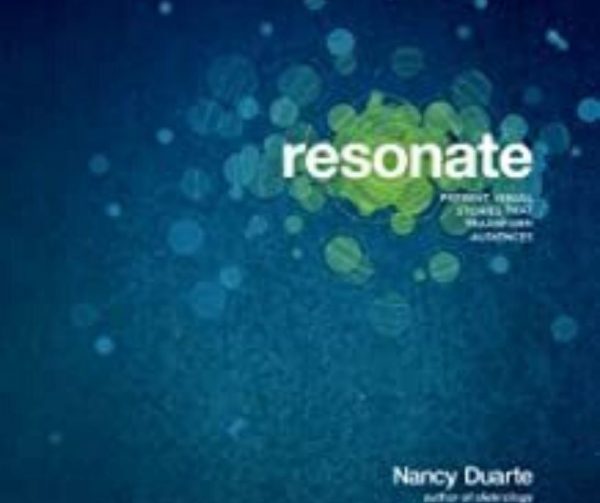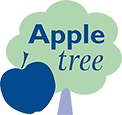Book of the Month – Do Your Presentations Resonate and Get Results?


The latest book I’ve been reading from the Business Book Club is Resonate by Nancy Duarte. It’s a long book, so I’m only going to write about part of it here – the part that makes a really good follow-on to the last book about which I wrote a blog, Building a Story Brand, Donald Miller – which you can read here.
Nancy Duarte says that a successful presentation leaves your audience saying “That really resonated with me.” It leaves them wanting to do what you suggest, as a result of listening to you, which could be following your example, buying your service or booking onto your next workshop. Do your presentations resonate and get results?
The simple way to make sure that your talks resonate and get you the results that you want is by adjusting to the frequency of your audience. When you put yourself onto their wavelength they will be able to see where you want them to go. You need to tune your message to the audience – by understanding their hearts and minds – in order to create a message that resonates with them.
You are Not the Hero!
Presentations are all about change – the change that you want to encourage in your audience. Presentations create the catalyst for change by using human contact, through establishing a connection with the people you are looking to change. One of the best ways to create this connection is through stories, as stories link one person’s heart to another. Values, beliefs and norms become intertwined. Then your ideas can manifest as reality in the minds of your audience.
But many presenters get it wrong because they see themselves as the hero in the story. You are not the hero – your audience is the hero in this story. If the members of your audience can’t see themselves as the hero, your talk will not resonate with them and they will not be moved to change.
For each hero, something must be at stake, which convinces her that something will be lost, or that something bad will happen if she doesn’t achieve her goal. If nothing is at risk, your presentation will not be interesting – it won’t resonate. If she doesn’t stop wasting money on trying to market her coaching business, she will run out of money, her business will fail and she’ll have to go back to a 9-5 job! Well, that’s just one example of how a story structure can be used in a presentation to make it more interesting for the audience.
Get to Know Your Hero
In her book, Duarte explains that you need to design your presentation with the members of your audience in mind. See them as a group of superheros. One of the best tips that I picked up from the book is that you should imagine your audience as a line of people waiting to have a conversation with you.
Get to know your audience. Who are they?
- What lifestyles do they live and where do they hang out?
- How much do they know about your subject?
- What motivates them?
- What’s important to them?
- How do they make decisions?
Your goal is to work out what your audience cares about and link it to your topic. Only once you’ve done that can you focus on the mentor or guide of the story – you. Be selfless and think of yourself in the context of others. Your role as the mentor or guide, as we saw in Building a Story Brand, is to help the hero to move past their obstacles and challenges, by teaching them and giving them guidance and insights. Give them the confidence and the tools they need to move on.
Plan Your Hero’s Journey
Presentations need a destination, so you need to map out where you want your hero to go. The content of your talk should move your heroes towards that destination. This movement from one place to another can involve persuading your heroes to let go of old beliefs (e.g. ‘marketing is difficult and expensive’) and adopt new ones (such as ‘marketing can be fun!’) Change doesn’t usually happen without resistance, but if you plan for that resistance, you can harness it.
What’s your big idea or destination? This is where you articulate your unique point of view and convey what’s at stake – the compelling reason that will make the audience move. If you can explain your big idea in one complete sentence, it will have more power. For the talks I’m currently giving, my big idea is this: “Wasting money on marketing your coaching, consulting or speaking can cause your business to fail.” Is that compelling enough?
As the presenter you need to ask your audience to change by moving from one way of being or doing (“Marketing is difficult and expensive and you have to try everything, don’t you?”) to a different way of being or doing (“Marketing is simple when I focus just on the activities that work for my business.”) You need to ask them to let go of what they previously thought was true. Empathise with the sacrifice they are making in letting go of the old way and the risks they are taking in adopting the new way. Show them the benefits and rewards of changing – what’s in it for them?
Every audience will persist in a state of rest unless they are compelled to change. When you spend time getting to know your audience, seeing them as hero and planning where you want to take them, your presentations are more likely to resonate with them. And when your talk resonates, your audience will be much more likely to be willing do what you want them to do.
I’ll write more about Nancy Duarte’s great book in another blog. In the meantime, if you need any help with creating more compelling, resonating presentations – especially ones that you can use to promote your coaching, consulting or speaking business – call me on 07773 252 744 or click here to email me.




